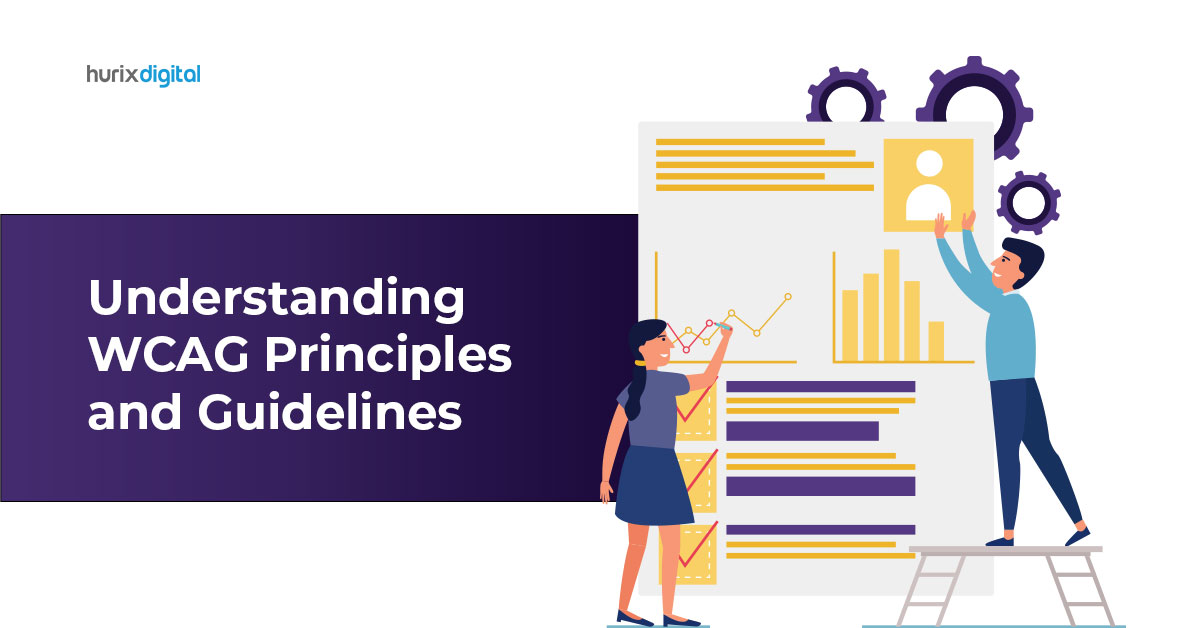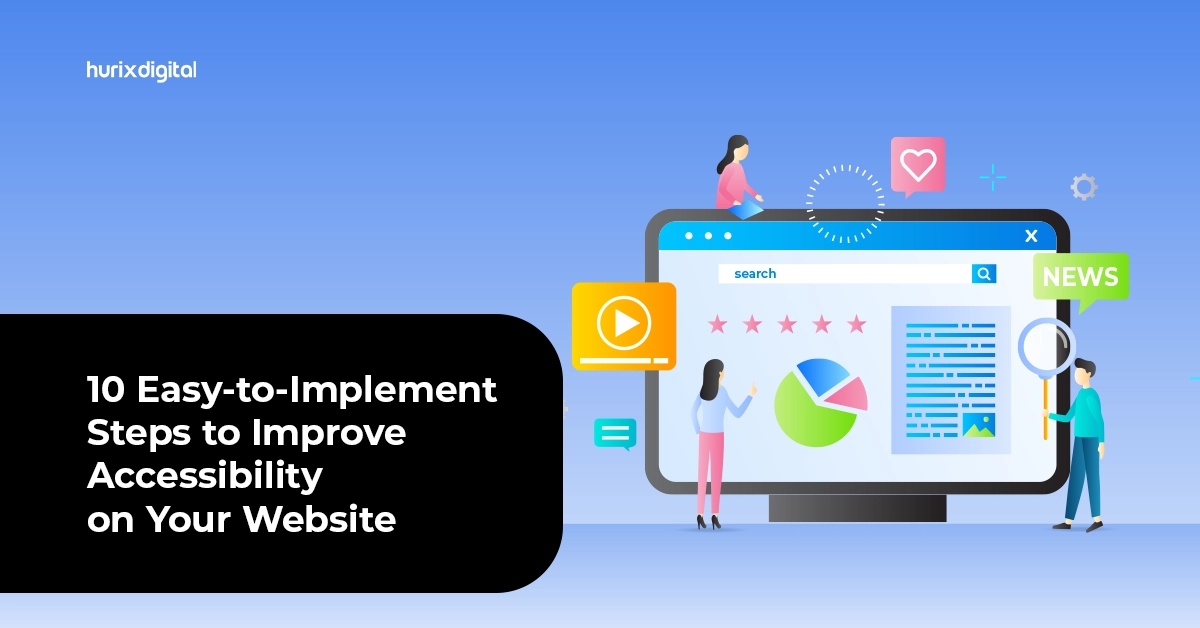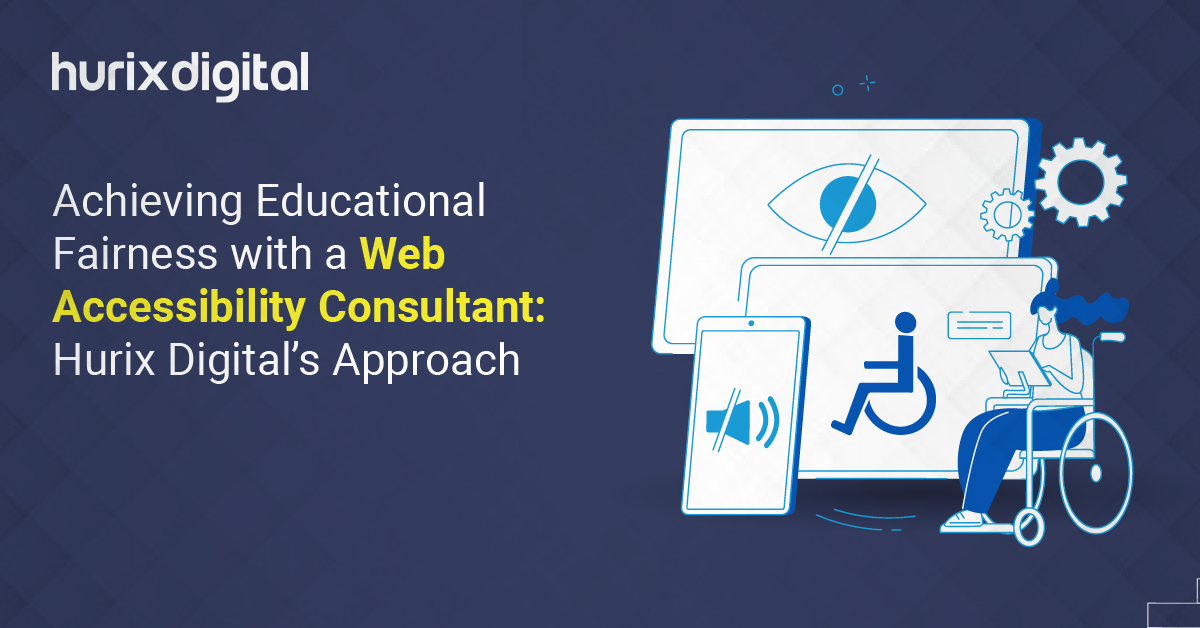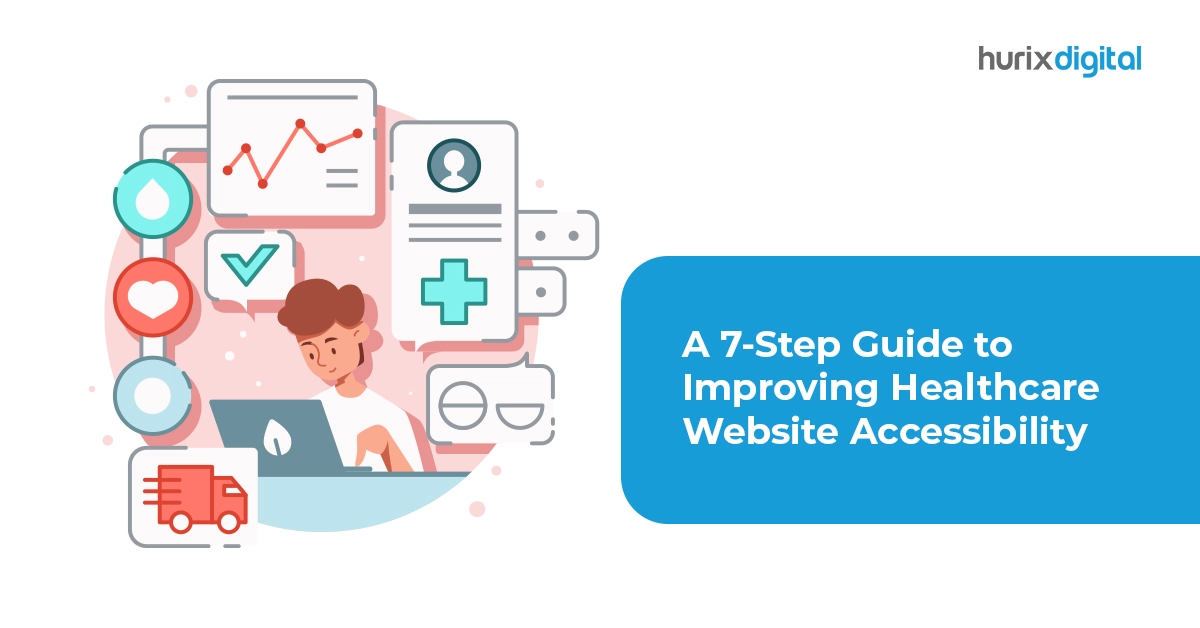
Understanding WCAG Principles and Guidelines
Summary
This comprehensive guide elucidates the significance of web accessibility and adherence to WCAG standards. It details the WCAG principles, various testing methods, helpful tools, and the necessary steps to achieve compliance. The guide emphasizes the critical need for ongoing maintenance to guarantee sustained accessibility.
If you are seeking to enhance your knowledge of web accessibility, then understanding the importance of WCAG website compliance is fundamental. In today’s digital age, the internet is a crucial aspect of daily life.
That being said, a vast population suffers from some form of disability, making web accessibility even more critical.
Web Content Accessibility Guidelines (WCAG) is a global set of standards that guides the designing and development of web content accessible to everyone, including those with disabilities.
Compliance with WCAG is crucial for businesses, organizations, and governments to ensure that their websites and digital content are accessible to all. Non-compliance can have legal, financial, and reputational repercussions and negative impacts on customer satisfaction.
This comprehensive guide aims to provide you with expert-level insights. It will help you gain valuable knowledge of the importance of web accessibility and the significance of WCAG compliance in today’s digital landscape.
Table of Content:
- The Four Principles of WCAG Compliance
- Testing Methods for WCAG website Compliance
- Tools and Resources for Testing
- Steps for Achieving WCAG website Compliance
- Importance of Ongoing Maintenance and Updates
- Summing it up
The Four Principles of WCAG Compliance
WCAG guidelines are organized into four primary principles; implementing each is essential to ensure your website is accessible to everyone.
1. Perceivable
The first principle, Perceivable, focuses on ensuring that web content is presented in a way that users with different abilities can perceive.
This principle requires you to provide text alternatives for non-text content such as images, videos, and audio and ensure that the content is easy to read and understand.
To implement it, use clear and concise language, provide descriptive headings, and ensure your content is structured logically.
2. Operable
The second principle, Operable, ensures that users can navigate and interact with web content using various devices and input methods.
This principle requires you to ensure your website is keyboard accessible, provide clear and consistent navigation, and avoid content that flashes or moves rapidly.
To implement it, use meaningful link text, give a skip link to bypass repetitive content, and ensure that your website is compatible with assistive technologies such as screen readers.
3. Understandable
The third principle, Understandable, is about ensuring that web content is presented in a way that is easy to understand.
This principle requires you to use simple language, provide clear instructions and feedback, and avoid jargon and abbreviations.
To implement it, use simple and familiar words, break down complex concepts into smaller pieces, and provide feedback on user actions.
4. Robust
The fourth principle, Robust, focuses on ensuring that web content is compatible with a range of technologies and devices, both current and future.
This principle requires you to use coding techniques that are widely supported, avoid proprietary technologies, and ensure that your website is compatible with the latest web standards.
To implement it, use valid and semantic HTML, separate content from presentation, and ensure your website is responsive and works well on different devices.
Following these guidelines and implementing each of the four principles of WCAG will ensure your website is accessible to people with disabilities. In addition, doing so can make your website more user-friendly, comply with legal requirements, and enhance your reputation as an inclusive and responsible business or organization.
Testing Methods for WCAG website Compliance
There are two main methods to test for WCAG website compliance: automated testing and manual testing.
1. Automated Testing
Automated testing uses software tools to scan web pages automatically for potential accessibility issues.
These tools can quickly identify problems such as missing alternative text for images, missing labels for form elements, and insufficient color contrast.
2. Manual Testing
Manual testing involves testing web pages using assistive technologies, such as screen readers, to simulate the experience of users with disabilities.
This method can identify issues that automated testing tools may miss, such as issues related to keyboard accessibility and screen reader compatibility.
Also Read: The Ultimate Guide to WCAG Compliance for the Website Developers
Tools and Resources for Testing
There are many tools and resources available for testing web accessibility.
Automated Testing Tools
- Web Accessibility Evaluation Tool (WAVE)
- Accessibility Insights for Web
- Axe Accessibility Browser Extension
Manual Testing Tools
- NVDA (NonVisual Desktop Access) Screen Reader
- VoiceOver Screen Reader
- JAWS (Job Access With Speech) Screen Reader
Other Resources
- WCAG Quick Reference Guide
- WebAIM’s Accessibility Checklist
- ARIA (Accessible Rich Internet Applications) Authoring Practices
Steps for Achieving WCAG website Compliance
WCAG website compliance can be achieved by following a structured approach. The following steps can help you achieve this.
- Conduct an Accessibility Audit: The first step is to conduct an accessibility audit of your website to identify any accessibility issues that need to be addressed. This can be done either through automated or manual testing methods.
- Develop a Plan: Based on the results of the accessibility audit, develop a plan to address the accessibility issues. The plan should prioritize the issues based on their severity and user impact.
- Implement Accessibility Changes: Implement the changes identified in the plan to address the accessibility issues.
- Test for Compliance: Once the accessibility changes have been implemented, test the website again for compliance. Use automated and manual testing methods to ensure the website meets WCAG guidelines.
- Publish an Accessibility Statement: Publish an accessibility statement on your website that describes your commitment to accessibility and the measures you have taken to make your website accessible to users with disabilities.
Importance of Ongoing Maintenance and Updates
Maintaining web accessibility is an ongoing process that requires regular updates and maintenance. New technologies, devices, and user needs may arise over time, requiring website updates.
Additionally, website content is constantly changing, and it is crucial to ensure new content is accessible to users with disabilities.
Ongoing maintenance and updates can help ensure that the website remains compliant with the WCAG guidelines and is accessible to all users. This can help improve the user experience, increase user engagement, and reduce legal risks associated with non-compliance.
Also Read: The Impact of WCAG 2025: What You Need to Know to Stay Compliant
Summing it up
Web accessibility is a critical aspect of web design and development that should not be overlooked. WCAG website compliance ensures that websites are accessible to users with disabilities and provides a framework for designing and developing accessible websites.
Following the WCAG guidelines and implementing accessibility best practices allows website owners to create websites accessible to all users and improve the user experience for everyone.
Hurix Digital’s Quality as a Service is a comprehensive solution for ensuring web accessibility and achieving WCAG accessibility compliance. Our QA services provide a range of services, including
- accessibility testing,
- remediation, and
- ongoing maintenance to ensure your website is accessible to everyone while ensuring that your website meets the highest standards of accessibility.
If you want to be inclusive in today’s digital landscape, contact us today.

Vice President – Digital Content Transformation. He is PMP, CSM, and CPACC certified and has 20+ years of experience in Project Management, Delivery Management, and managing the Offshore Development Centre (ODC).







